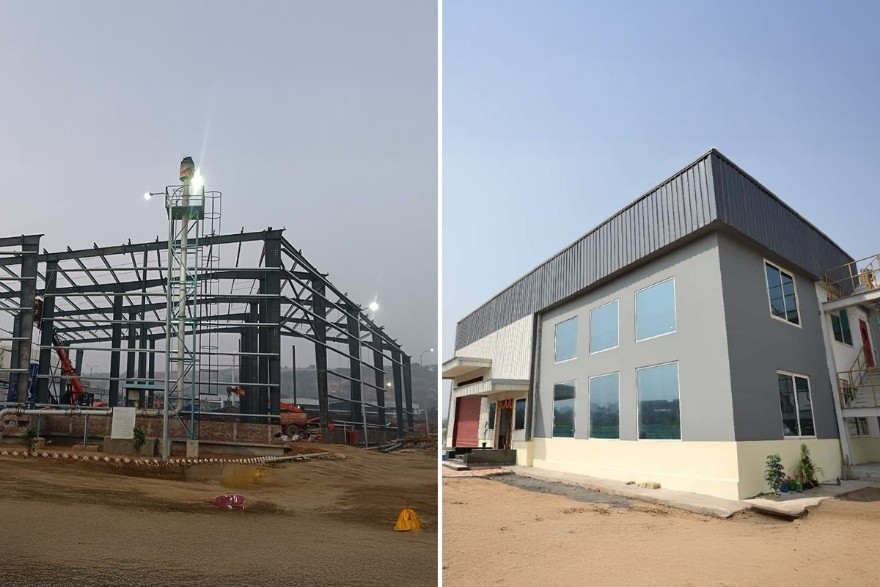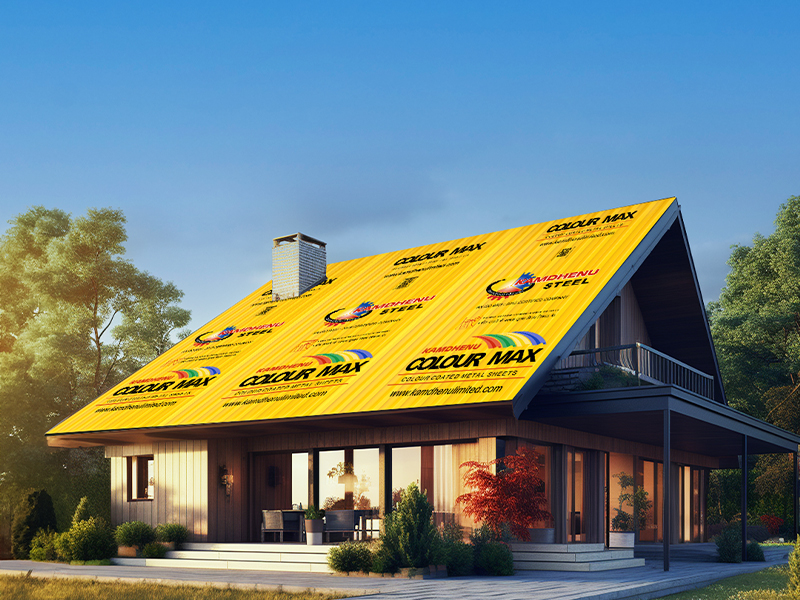
India’s construction landscape is evolving rapidly. As infrastructure expands to keep pace with urbanisation, digitisation, and industrialisation, there’s a clear shift toward more flexible, faster, and cost-effective building methods. At the forefront of this transformation are pre-engineered steel structures, modular, factory-fabricated buildings that are assembled on-site with minimal wastage and reduced timelines.
Once considered suitable only for industrial warehouses or temporary setups, pre engineered buildings (PEBs) are now used across sectors, from urban housing and logistics parks to schools, airports, and even agriculture. The flexibility of design, combined with durable components like house roofing sheets and color coated roofing sheets, allows these structures to adapt to a range of environments and functions.
1. Warehousing and Logistics Hubs
The most prominent application of pre-engineered steel structures is in the warehousing and logistics sector. With the rise of e-commerce and faster supply chain cycles, demand for large, open-span buildings has skyrocketed.
PEBs can be quickly installed across vast areas and easily customised for racking systems, docking bays, ventilation systems, and solar integration. Color coated roofing sheets are especially valuable in these applications, offering UV resistance and thermal insulation, which help maintain internal temperatures and reduce energy consumption.
2. Residential Housing and Rural Development
Pre-engineered buildings are making inroads into India’s housing market, particularly in disaster-prone or remote regions. In areas where traditional construction is logistically difficult or time-consuming, such as the northeastern hills or flood-prone zones in Bihar pre-engineered steel homes offer a viable solution.
Lightweight house roofing sheets, designed for thermal efficiency and ease of installation, have become central to this shift. These roofs can be installed on steel or composite frames and are often preferred in rural housing schemes, low-cost homes, or as expansions to existing buildings.
3. Schools, Health Clinics, and Government Facilities
Governments across Indian states are turning to pre-engineered structures to build facilities quickly and cost-effectively. Health sub-centres, anganwadi units, mobile classrooms, and disaster-relief shelters are now commonly fabricated using PEB technology.
The use of color coated roofing sheets in these structures allows for vibrant exterior aesthetics while ensuring low maintenance in harsh weather. Moreover, the sheets are often chosen in lighter shades to reflect heat important for comfort in rural schools and health units without air-conditioning.
4. Cold Storage and Agro-Processing Units
With a renewed focus on agricultural infrastructure, cold storage facilities and food processing centres are being set up even in interior districts. These require quick construction, minimal thermal leakage, and adaptability to hygiene regulations, making pre-engineered buildings an ideal fit.
The roof plays a crucial role in such facilities. Insulated house roofing sheets and color-coated panels help maintain internal temperatures while resisting corrosion from moisture-rich environments. Some variants are coated with anti-fungal or anti-bacterial layers to comply with food safety standards.
5. Commercial Spaces and Retail Units

From car showrooms to hyperlocal retail centres and petrol pump canopies, pre-engineered steel structures offer great flexibility for commercial applications. The modern Indian customer is looking for sleek design, modular interiors, and sustainable materials.
This is where color coated roofing sheets contribute both function and form. Available in a variety of finishes and colors, they offer a refined exterior while reducing the building’s thermal footprint. Plus, the modular nature of PEBs allows quick redesigns or expansions as businesses scale or pivot.
6. Parking Shelters and Public Infrastructure
In urban India, parking facilities are in chronic shortage. PEBs are now being used to create covered parking solutions in residential complexes, shopping centres, and transport hubs. Their quick assembly and ability to be relocated or resized make them ideal for dynamic urban requirements.
Roofing for these shelters often uses durable, UV-resistant house roofing sheets that are low-maintenance and weatherproof. In larger bus terminals or train station expansions, color-coated variants are preferred for aesthetic consistency with other structures.
7. Industrial Manufacturing Units
Manufacturing facilities are perhaps where pre-engineered steel structures have had the most consistent use. With minimal internal columns, wide spans, and tall clearances, they support crane operations, heavy machinery, and industrial ventilation systems.
In such setups, the roof has to be exceptionally durable, able to handle dust, chemical exposure, and high thermal loads. Color coated roofing sheets are favoured here due to their superior performance in high-heat or corrosive environments, and they can be designed to accommodate rooftop solar installations or skylights.
Conclusion: The Structural Future Is Prefabricated and Purpose-Built
India’s needs are changing, not just in size, but in complexity. Whether it’s creating a rural health centre, building an energy-efficient warehouse, or providing shelter in disaster zones, construction today needs to be fast, adaptive, and resource-conscious. Pre-engineered steel structures answer all three needs.
By incorporating materials like house roofing sheets and color coated roofing sheets, these buildings are not just durable, they are climate-responsive, cost-effective, and visually contemporary. They offer a smarter way to build in a country where every square foot counts and every construction decision impacts sustainability.
As technology improves and demand for adaptable infrastructure grows, the role of PEBs will only become more central in shaping India’s next generation of spaces for living, learning, working, and growing.
